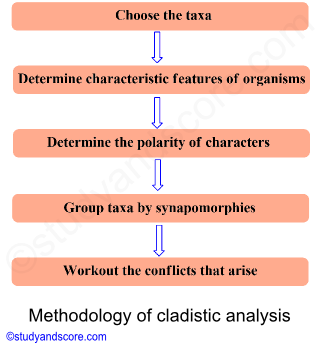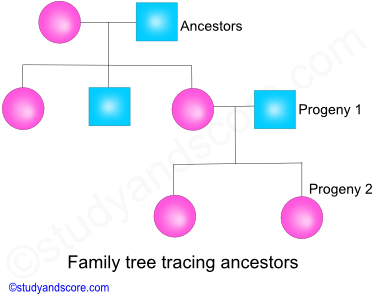Cladistics is the method of assuming relationships between organisms. This method has its own set of assumptions, procedures, and limitations. This is the best method for phylogenetic analysis, as it provides a clear and open hypothesis to determine relationships of organisms.
According to cladistics, members of a group share a common evolutionary history. They are related very closely, to members of the same group than to other. The members of the group share unique features which were not present in their distant ancestors. These shared and derived features are called synapomorphies.
It is not enough for an organism just to share features, because two organisms may share many features and still may not be considered as the members of same group. For example, let us consider starfish, jellyfish and human. The jellyfish and starfish live in water, they both have radial symmetry and both are invertebrates. By these external features we can say that they belong to same group. But as per evolutionary relationship starfish and human are more closely related.
Diversity of life on earth is due to the reproduction of existing organisms. The live on the planet Earth originated only once and hence all the organisms are related to one another in some way or the other. This relation can be studied on any given group of animals and significant deductions can be drawn. These meaningful patterns of relationships provide a great deal of information.
According to this assumption, new kinds of organisms evolve when existing species divide into exactly two groups. This assumption is debatable as biologists believe that multiple new lineages can evolve from a single population at the same time. Moreover there is also a possibility of interbreeding between distinct groups.
Cladistics assumes that the features of the living organisms change over time. It is because of this change that one can observe and recognize different lineages or groups. In cladistics the original feature is called as plesiomorphic or primitive feature whereas the changed feature is called as apomorphic or derived feature.
1. Choose the taxa whose evolutionary relationships interest you. These taxa must be clades if you hope to come up with reasonable results.
2. Determine the characteristic features of the organisms and examine each taxon to determine the character states. All taxa must be unique.
3. Determine the polarity of characters.
4. Group taxa by synapomorphies, shared derived characteristics and not by plesiomorphies original characteristics.
5. Work out conflicts that arise by parsimony method to minimize the number of conflicts.
6. Build your cladogram following these rules:
* All taxa go on the endpoints of the cladogram, never at nodes.
* All cladogram nodes must have a list of synapomorphies which are common to all taxa above the node.
* All synapomorphies appear on the cladogram only once unless the character state was derived separately by evolutionary parallelism.

The phylogenetic analysis gives out a theory of relationship of different taxa. This theory can be denoted as a cladogram. Cladograms are branching diagrams which are similar to family trees. Just as we can trace our ancestry with the help of family tree, we can trace the ancestry of the organisms with the help of cladogram. Both cladograms and family trees are very rich in information.
For example, see the family tree given below, Pink dots can be considered as female and the blue square can be considered as male. The ancestors in this family give rise to three progeny in first geeration (shown as progeny 1). One of them mates to produce second generation (shown as progeny 2)


- Share with your friends! -
Uzma Rafi on Jul 02, 2018 at 01:10 pm
These notes are well written. How can i get these notes???????

Study Score on Jul 03, 2018 at 06:30 am
Thank you Uzma Rafi. Our notes are copy protected. So you cannot download them. However you can visit the site or make notes as per your need.
Login to post your comment here...
- or with social Account -